 The influence of renewable energy in power generation is rising across the U.S. Growing adoption is creating an increase in wholesale price volatility, which we expect will expand in importance with the new decade.
The influence of renewable energy in power generation is rising across the U.S. Growing adoption is creating an increase in wholesale price volatility, which we expect will expand in importance with the new decade.
Much of the uptick to price volatility is caused by a reduced dependence on thermal units. These units are power stations that convert heat into electric power, often via steam-powered turbines.
The new sources of renewable energy have also led to increases in congestion on transmission lines. These bottlenecks can also be a source of higher price volatility, as seen in markets that are adding solar and wind power to their grid.
From California to Texas to the Midcontinent, Enverus’ power analytics have detected increases in price volatility. Let’s start our study in California, where the local ISO (CAISO) reduced renewable generation from August to September created higher supply/demand in September, and stronger prices with hotter weather.
Renewable Power and Wholesale Price Volatility in California
In California, we expect to see an ongoing solar build-out. The state’s Energy Imbalance Market (EIM) is leaned on more and more to balance the grid with more renewables, and the Southwest Power Pool’s (SPP) movement westward could ease CAISO’s ability to balance the grid.
From Aug. 1 to Sept. 30, 2019, CAISO wind and solar generation dropped by 0.15% and 0.03%, respectively.
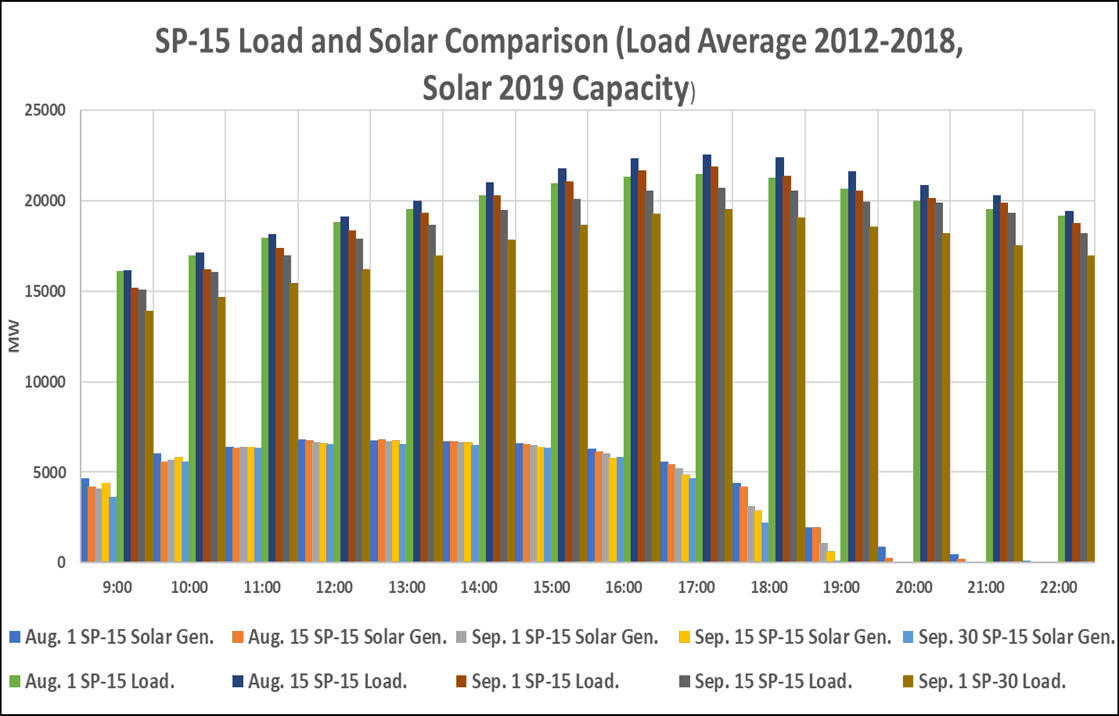
As noted in the chart above, SP-15 peak load hours from 7 p.m. to 9 p.m. in September are close to the peak load observed in August. Meanwhile, solar generation is very low – nearly zero – during these hours in September.
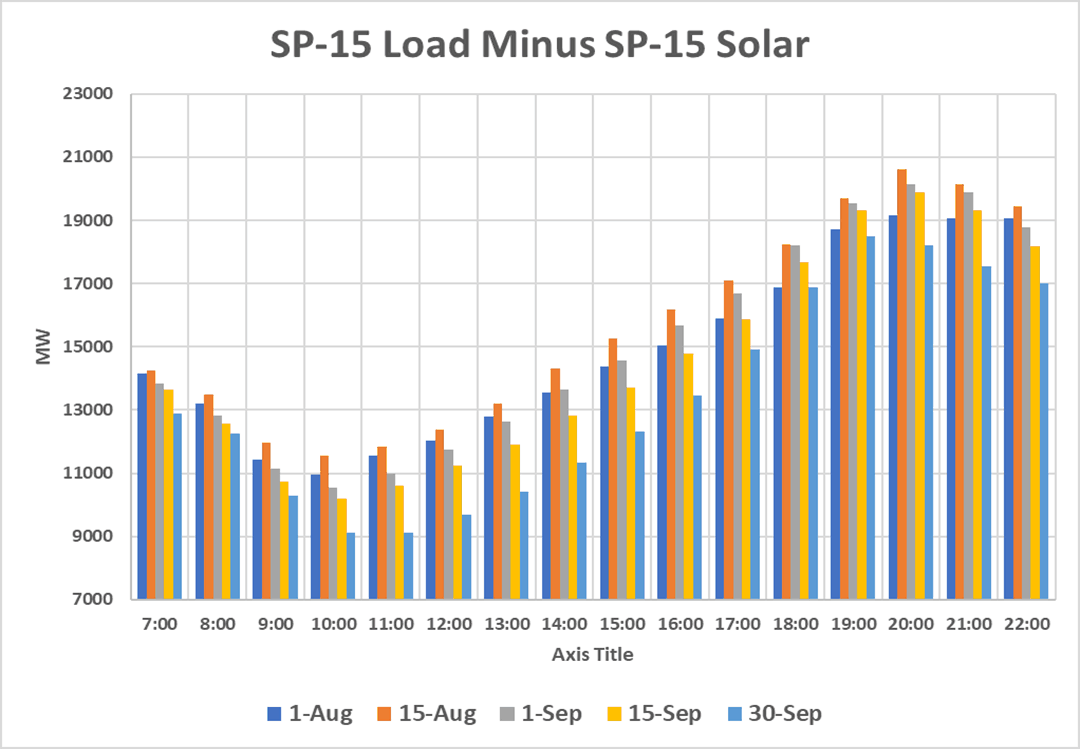
The chart above shows how natural gas peaking units are needed to meet load as the sun goes down and solar generation drops. This demonstrates the impact of high load in September when the sun goes down earlier in the day.
Renewable Power and Wholesale Price Volatility in Texas
Prices will swing to extreme levels in the summer and the winter as reliance on non-dispatchable renewables continue to grow. In Texas, or the ERCOT market, power prices are trending lower as more renewables penetrate the wholesale market. This is making it harder for ERCOT to attract new gas plants, and companies that own coal and high-efficiency gas plants will continue to lose money.
In August of 2019, ERCOT wholesale power prices ballooned as loads hit a record-high throughout many days in August.
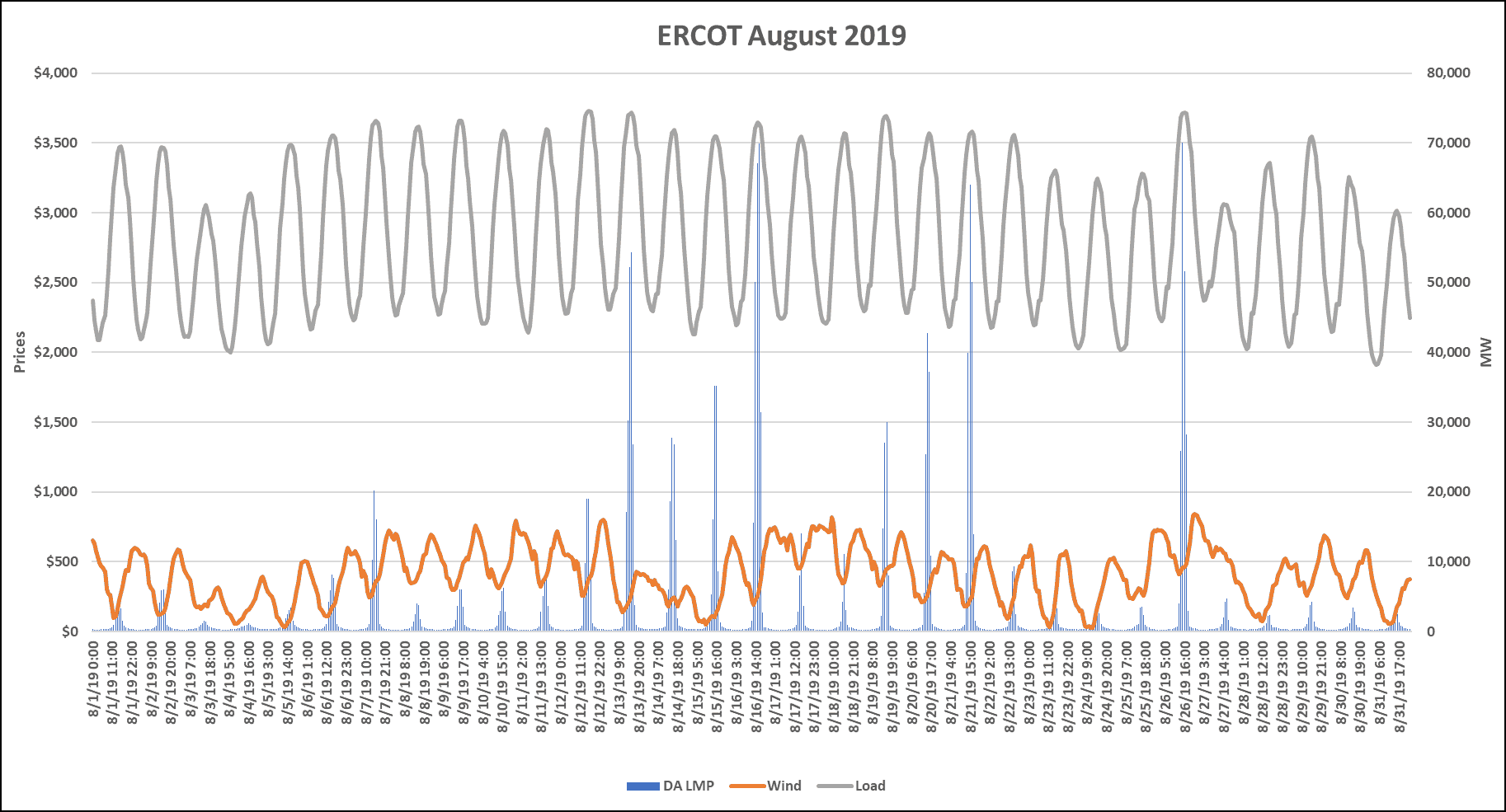
Wind generation came to the rescue at that time, greatly reducing wholesale power prices even when the load stayed relatively high. The same phenomenon was observed in September, as shown in the chart below.
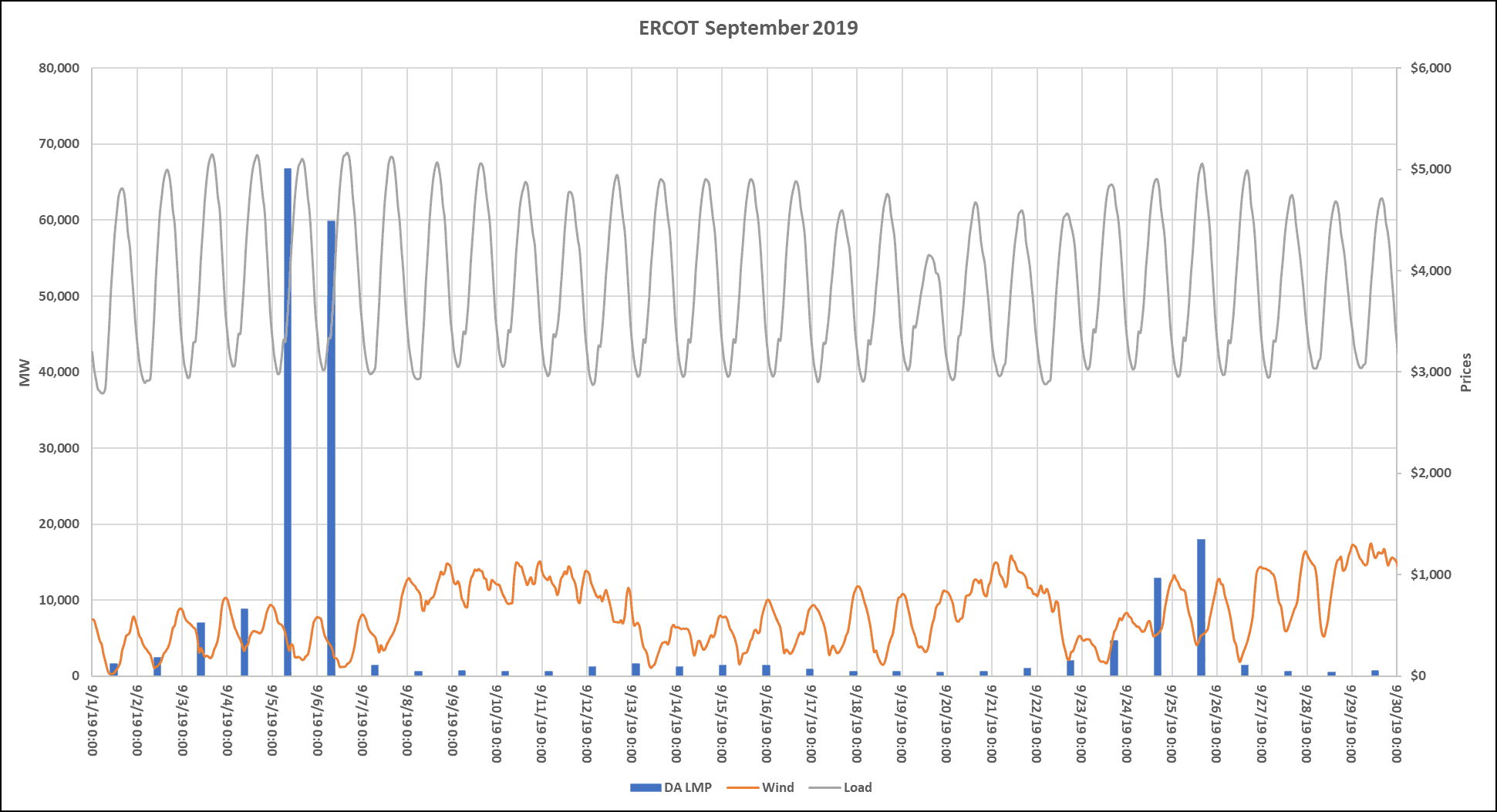
Southwest Power Pool Migrates West, Wholesale Price Volatility Elevates
As the SPP expands to the west, CAISO’s ability to balance the grid becomes more challenging. Within the SPP, which covers the midcontinent from North Dakota down to the panhandle of Texas, wind generation has grown significantly.
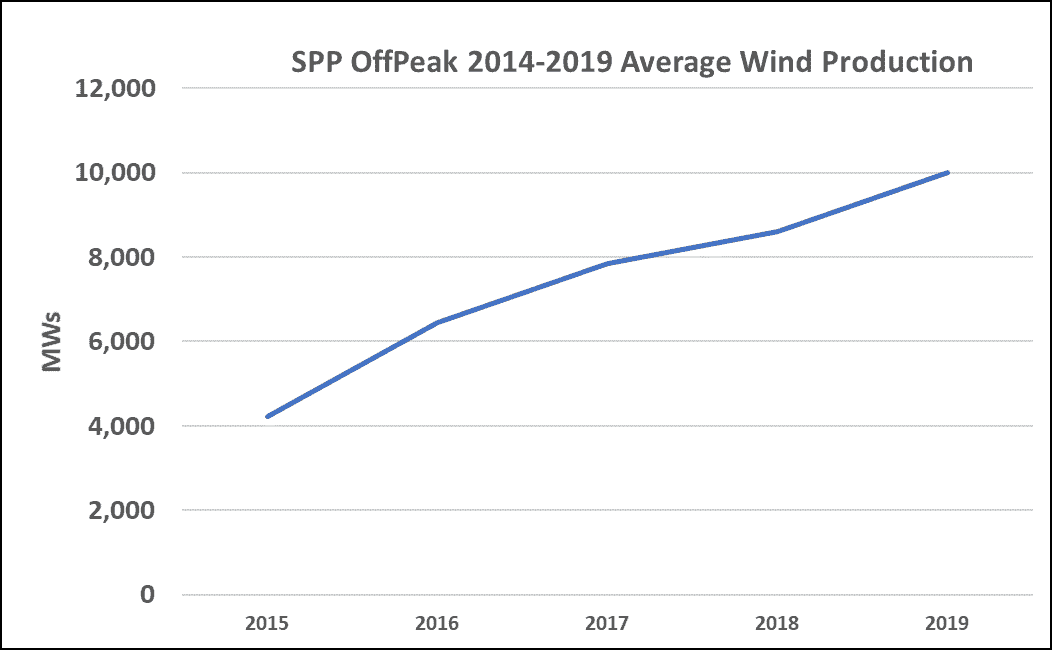
SPP off-peak average wind production more than doubled between 2015 and 2019, rising to 10,000 MWs. The result of the increase in wind production was an increase in volatility, which was most prominently observed in April 2019, as shown below.
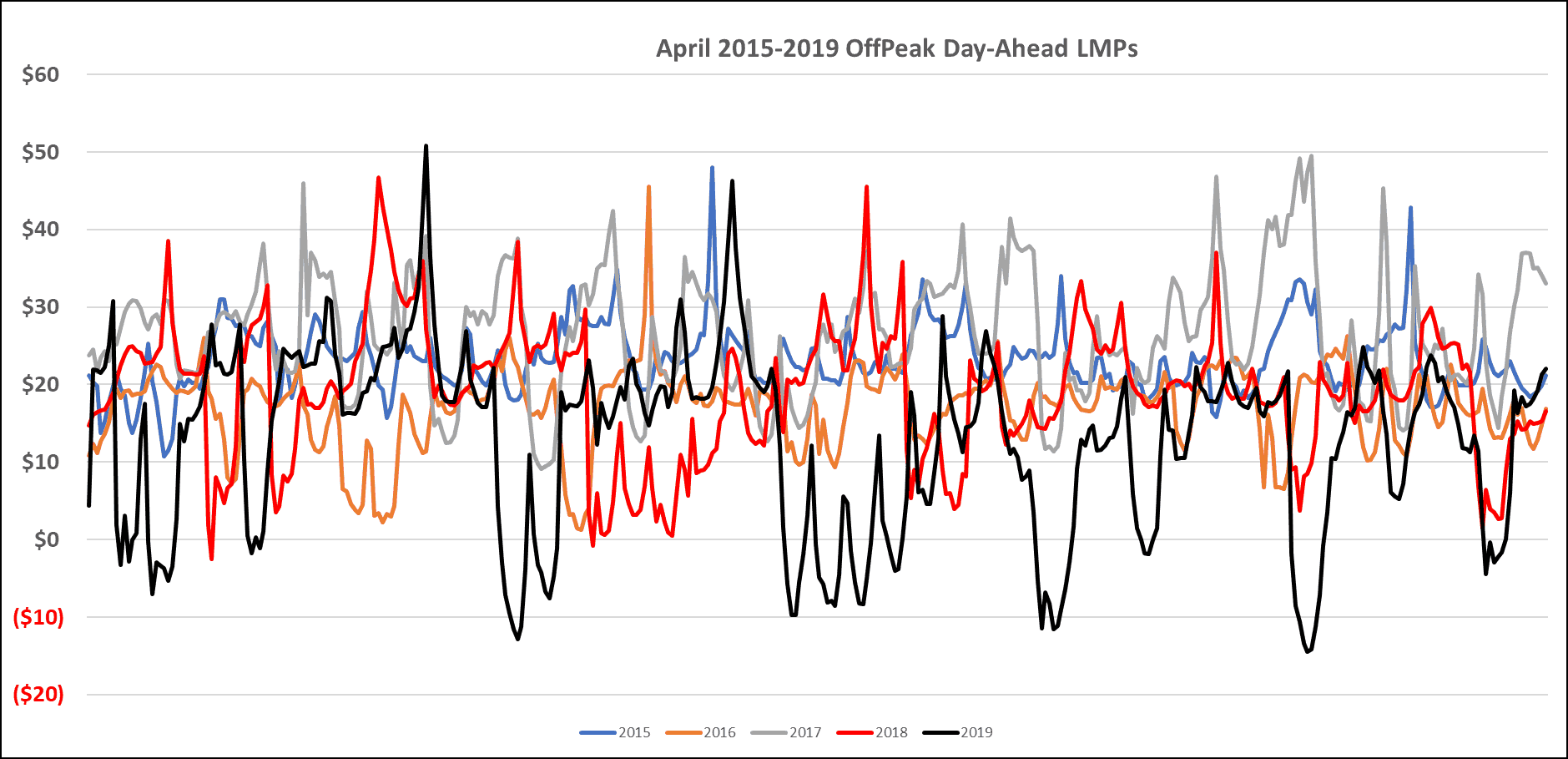
In 2019, increased wind generation in SPP created negative pricing 70 times in April 2019, versus four the previous year. From 2015-2017, there were zero instances of negative pricing. The price range in April was widest among the five years studied; prices ranged between -$14.43/MW to $50.81/MW. The previous year, the range was tighter between -$2.50/MW to $46.60/MW.
Accurate Load Forecasting is More Important Than Ever as Renewable Market Share Grows
With such unruly volatility in three major U.S. ISO markets, it’s more important than ever to have the most accurate load forecasting the market has to offer.
As we enter a new decade with rekindled efforts to rally around expansion of clean and renewable energy, it’s a great time to trial the PRT Forecasts that have led the market for more than 25 years. As pioneers in the AI analytics space, our team started using machine learning in the 1990s to more accurately forecast power loads. Now we are taking our analysis to a greater level with deep learning. We’re getting more granular with our data and utilizing stronger computing power to give our customers the most accurate forecasts in the market.
To learn more or receive a free trial, please visit us at https://www.enverus.com/ft/cds-prt-e-loadforecast-free-trial/.






